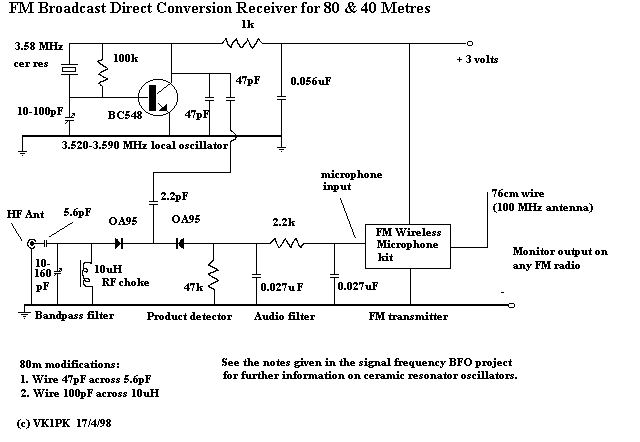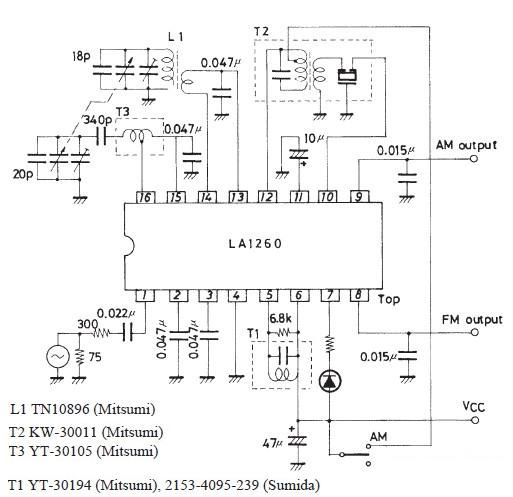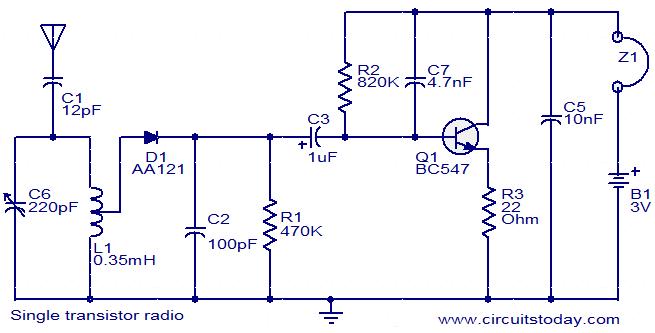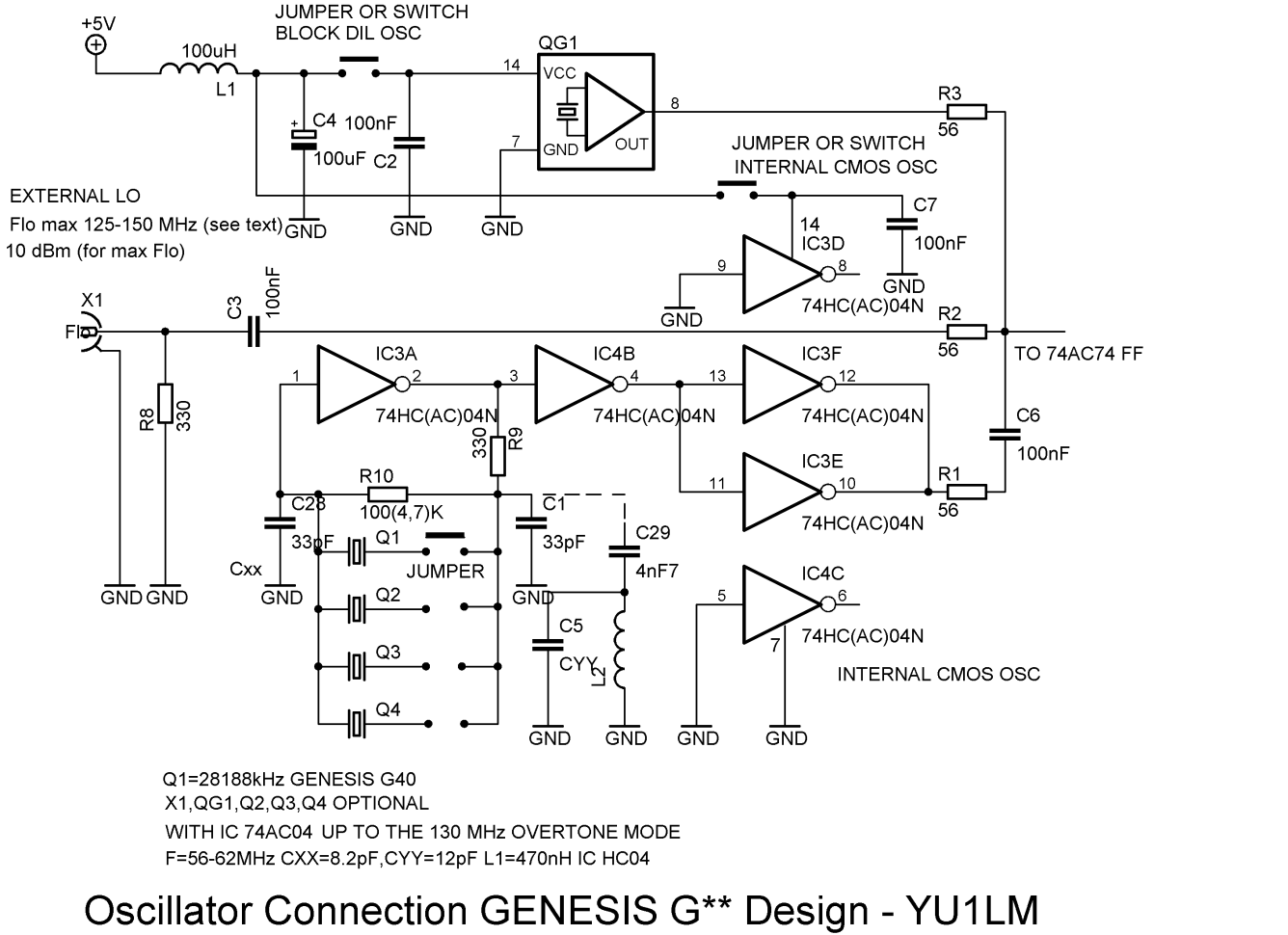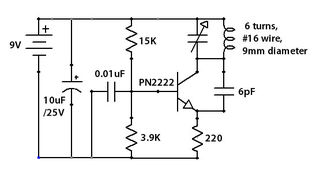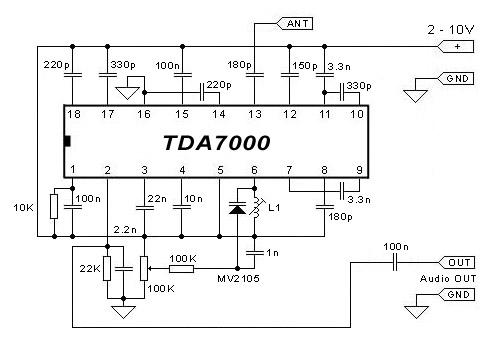
regenerative radio receivers
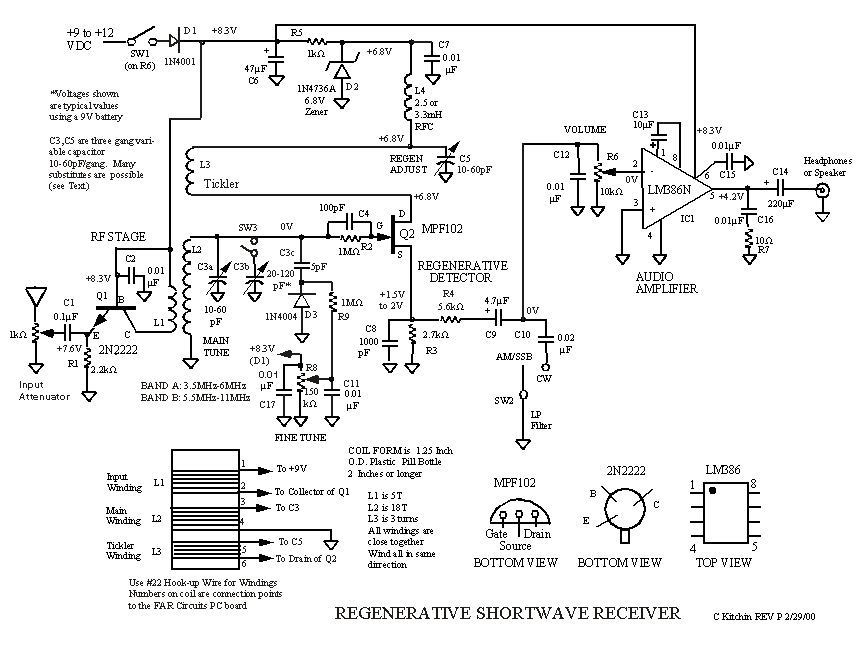
A regenerative radio receiver is known for its simplicity, weak signal reception, inherent noise-limiting and automatic gain control (AGC) action, as well as its immunity to overloading and spurious responses. The regenerative radio receiver, often referred to as "regen," operates as an oscillating detector receiver. It can function as a simple detector for continuous wave (CW) or single sideband (SSB) signals when adjusted for oscillation, or for amplitude-modulated (AM) phone signals when set just below the point of oscillation. In contrast, direct conversion receivers utilize a separate heterodyne oscillator to generate a signal. The electronic project presented here by Charles Kitchin, N1TEV, features a three-stage receiver that addresses some limitations of this receiver type, primarily by incorporating a radio frequency (RF) amplifier before the detector stage. This radio is a two-band shortwave receiver that is both highly sensitive and portable, capable of receiving AM, SSB, and CW signals across a frequency range of approximately 3.5 to 12 MHz. This range encompasses the 80, 40, and 30 meter Ham bands, along with several international shortwave bands. The receiver is particularly suited for code practice and general shortwave listening, although it requires some practice and patience from the user to learn how to tune and adjust the controls. It is categorized as a medium skill level project, designed for construction by the average amateur radio operator under the guidance of experienced mentors, often referred to as "Elmers," who can assist with soldering, coil winding, troubleshooting, and operation of the receiver. The project has also proven to be a suitable family activity, with several parents collaborating with their children to build radios in the BARS club class. The BARS Ham Radio club benefited from the expertise of several seasoned Elmers, including club president Ken Caruso, WO1N, treasurer Bruce Anderson, W1LUS, New England Vice ARRL Director Mike Raisbeck, K1TWF, and regenerative radio and homebrewing enthusiast Chuck Kitchin, N1TEV. Other club members contributed by donating parts or their time to support the project. Most kit builders were graduates of the Chelmsford Charter School summer Ham radio class, accompanied by their fathers, though interest in the project extended to a wider range of BARS members. Clubs intending to undertake a similar project should allocate a minimum of two sessions for kit completion, allowing time for instruction on soldering techniques, component identification, and schematic reading. This project is designed to be built using the FAR Circuits printed circuit board, which shares the project's title. The use of this board is highly recommended as it significantly reduces soldering time and minimizes wiring errors that often occur during assembly. Additionally, it helps prevent crossed connections and enhances performance compared to hand-wired boards due to its designed component layout and shielding. The PC boards are available from FAR Circuits for $5.00 each, with an additional $1.50 shipping fee for up to three boards. A group discount of 10% is offered for orders of ten boards or more. FAR Circuits can be contacted at 18N640 Field CT, Dundee, IL, 60118-9269. Phone: 847-836-9148 (voice and fax). Orders are not accepted by email. As illustrated in Figure 1, the receiver comprises three sections: a radio frequency (RF) stage, a detector stage, and an audio amplifier stage. A bipolar transistor is employed in the RF stage, a JFET in the detector stage, and a low-cost integrated circuit (IC) is used in the audio amplifier. The RF stage, designated as Q1, amplifies signals from the antenna and provides isolation to prevent the radio's oscillations from interfering with other nearby receivers. The JFET Q2 serves as a "regenerative" detector, utilizing positive feedback to significantly enhance the receiver's sensitivity. It also generates a local oscillation for CW reception.
The regenerative radio receiver described is a sophisticated yet accessible project that combines various electronic components to enable effective signal reception across multiple bands. The architecture of the receiver is structured into three fundamental stages: the RF amplifier, the regenerative detector, and the audio amplifier, each serving a distinct purpose in the signal processing chain.
In the RF stage, the bipolar transistor (Q1) plays a critical role in amplifying incoming radio frequency signals from the antenna. This stage is crucial for enhancing weak signals and ensuring that the subsequent stages receive adequate signal strength for further processing. The isolation provided by the RF stage is essential to maintain the integrity of the received signals and to prevent unwanted feedback that could lead to oscillation issues in nearby receivers.
The regenerative detection stage, utilizing the JFET (Q2), is where the receiver's sensitivity is maximized. By employing positive feedback, this stage allows for the amplification of the RF signals while simultaneously demodulating the signal to retrieve the audio content. The regenerative action not only enhances sensitivity but also allows for improved selectivity, enabling the receiver to discern between closely spaced frequencies.
The audio amplifier stage, constructed with a low-cost integrated circuit, is responsible for converting the demodulated signals into audible sound. This stage typically includes additional filtering and amplification to ensure that the output is clear and intelligible for the listener.
Overall, the design of this regenerative radio receiver exemplifies a balance between simplicity and performance, making it an ideal project for amateur radio enthusiasts looking to deepen their understanding of radio technology while building a functional device. The project encourages collaboration and learning, providing an excellent platform for skill development in electronics and radio communication.A regenerative radio receiver is unsurpassed in comparable simplicity, weak signal reception, inherent noise-limiting and agc action and, freedom from overloading and spurious responses. The regenerative radio receiver or, even super-regenerative radio receiver or, "regen" if you prefer, are basically oscillating detector receivers.
They are simpl e detectors which may be used for cw or ssb when adjusted for oscillation or a-m phone when set just below point of oscillation. In contrast direct conversion receivers use a separate hetrodyne oscillator to produce a signal. In the comprehensive electronic project presented here, Charles Kitchin, N1TEV has provided us with a three stage receiver project which overcomes some of the limitations of this type of receiver, principally the provision of an rf amplifier ahead of the detector.
The radio described here is a two band short wave receiver which is both very sensitive and very portable. It receives AM, single sideband (SSB), and CW (code) signals over a frequency range of approximately 3.
5 to 12MHz. This includes the 80, 40, and 30 meter Ham bands plus several international short wave bands. This receiver is ideal for code practice and for general short wave listening although a certain amount of practice (and patience) is needed while the user learns how to tune and adjust the controls. This should be considered a medium skill level project. It was designed to be built by the average Ham under the mentorship of experienced "elmers" who can provide guidance on soldering, coil winding, troubleshooting, and operating the receiver.
It is also a good "family" project. In the BARS club class, several parents built radios with their kids. The BARS Ham Radio club was fortunate to have several experienced "Elmers" including club president Ken Caruso, WO1N, club treasurer Bruce Anderson, W1LUS, New England Vice ARRL Director Mike Raisbeck, K1TWF, and regenerative radio / homebrewing fanatic Chuck Kitchin, N1TEV. Many other members of the club helped out by donating parts or their time to this project. The majority of the kit builders were graduates of the Chelmsford Charter School summer Ham radio class and their dads.
However, the enthusiasm was widespread and several BARS members just had to build one too! Clubs planning to tackle a project like this should plan on a minimum of two sessions to complete the kits. You need to plan time to teach soldering techniques, component identification and schematic reading. This project is designed to be built using the FAR Circuits printed circuit board (the name of the PC board is the same as this project`s title).
The use of this board is HIGHLY recommended as it greatly reduces the time spent soldering the circuit and avoids the many wiring errors that always occur during construction. It also helps prevent crossed connections and provides better performance than a hand wired board (because proper component location and shielding are designed into the PC board).
The PC boards are available from FAR Circuits for $5. 00 each plus $1. 50 shipping for up to 3 boards. There is a group discount rate of 10% for 10 boards or more. You can contact FAR Circuits at 18N640 Field CT. Dundee, IL, 60118-9269. Tel: 847-836-9148 (voice and FAX) EMAIL: Farcir@ais. net Orders NOT accepted by email. As shown in Figure 1, this receiver consists of three sections: a radio frequency RF stage, a detector stage, and an audio amplifier stage. A bipolar transistor is used in the radio frequency stage, a JFET in the detector and the audio amplifier uses a low-cost IC.
The RF stage, Q1 amplifies the antenna signals and provides isolation to prevent the radio`s oscillations from causing interference to other receivers in the area. JFET Q2 is a "regenerative" detector, which, by the use of positive feedback, greatly increases the receiver`s sensitivity.
It also supplies a local oscillation for the reception of CW 🔗 External reference
The regenerative radio receiver described is a sophisticated yet accessible project that combines various electronic components to enable effective signal reception across multiple bands. The architecture of the receiver is structured into three fundamental stages: the RF amplifier, the regenerative detector, and the audio amplifier, each serving a distinct purpose in the signal processing chain.
In the RF stage, the bipolar transistor (Q1) plays a critical role in amplifying incoming radio frequency signals from the antenna. This stage is crucial for enhancing weak signals and ensuring that the subsequent stages receive adequate signal strength for further processing. The isolation provided by the RF stage is essential to maintain the integrity of the received signals and to prevent unwanted feedback that could lead to oscillation issues in nearby receivers.
The regenerative detection stage, utilizing the JFET (Q2), is where the receiver's sensitivity is maximized. By employing positive feedback, this stage allows for the amplification of the RF signals while simultaneously demodulating the signal to retrieve the audio content. The regenerative action not only enhances sensitivity but also allows for improved selectivity, enabling the receiver to discern between closely spaced frequencies.
The audio amplifier stage, constructed with a low-cost integrated circuit, is responsible for converting the demodulated signals into audible sound. This stage typically includes additional filtering and amplification to ensure that the output is clear and intelligible for the listener.
Overall, the design of this regenerative radio receiver exemplifies a balance between simplicity and performance, making it an ideal project for amateur radio enthusiasts looking to deepen their understanding of radio technology while building a functional device. The project encourages collaboration and learning, providing an excellent platform for skill development in electronics and radio communication.A regenerative radio receiver is unsurpassed in comparable simplicity, weak signal reception, inherent noise-limiting and agc action and, freedom from overloading and spurious responses. The regenerative radio receiver or, even super-regenerative radio receiver or, "regen" if you prefer, are basically oscillating detector receivers.
They are simpl e detectors which may be used for cw or ssb when adjusted for oscillation or a-m phone when set just below point of oscillation. In contrast direct conversion receivers use a separate hetrodyne oscillator to produce a signal. In the comprehensive electronic project presented here, Charles Kitchin, N1TEV has provided us with a three stage receiver project which overcomes some of the limitations of this type of receiver, principally the provision of an rf amplifier ahead of the detector.
The radio described here is a two band short wave receiver which is both very sensitive and very portable. It receives AM, single sideband (SSB), and CW (code) signals over a frequency range of approximately 3.
5 to 12MHz. This includes the 80, 40, and 30 meter Ham bands plus several international short wave bands. This receiver is ideal for code practice and for general short wave listening although a certain amount of practice (and patience) is needed while the user learns how to tune and adjust the controls. This should be considered a medium skill level project. It was designed to be built by the average Ham under the mentorship of experienced "elmers" who can provide guidance on soldering, coil winding, troubleshooting, and operating the receiver.
It is also a good "family" project. In the BARS club class, several parents built radios with their kids. The BARS Ham Radio club was fortunate to have several experienced "Elmers" including club president Ken Caruso, WO1N, club treasurer Bruce Anderson, W1LUS, New England Vice ARRL Director Mike Raisbeck, K1TWF, and regenerative radio / homebrewing fanatic Chuck Kitchin, N1TEV. Many other members of the club helped out by donating parts or their time to this project. The majority of the kit builders were graduates of the Chelmsford Charter School summer Ham radio class and their dads.
However, the enthusiasm was widespread and several BARS members just had to build one too! Clubs planning to tackle a project like this should plan on a minimum of two sessions to complete the kits. You need to plan time to teach soldering techniques, component identification and schematic reading. This project is designed to be built using the FAR Circuits printed circuit board (the name of the PC board is the same as this project`s title).
The use of this board is HIGHLY recommended as it greatly reduces the time spent soldering the circuit and avoids the many wiring errors that always occur during construction. It also helps prevent crossed connections and provides better performance than a hand wired board (because proper component location and shielding are designed into the PC board).
The PC boards are available from FAR Circuits for $5. 00 each plus $1. 50 shipping for up to 3 boards. There is a group discount rate of 10% for 10 boards or more. You can contact FAR Circuits at 18N640 Field CT. Dundee, IL, 60118-9269. Tel: 847-836-9148 (voice and FAX) EMAIL: Farcir@ais. net Orders NOT accepted by email. As shown in Figure 1, this receiver consists of three sections: a radio frequency RF stage, a detector stage, and an audio amplifier stage. A bipolar transistor is used in the radio frequency stage, a JFET in the detector and the audio amplifier uses a low-cost IC.
The RF stage, Q1 amplifies the antenna signals and provides isolation to prevent the radio`s oscillations from causing interference to other receivers in the area. JFET Q2 is a "regenerative" detector, which, by the use of positive feedback, greatly increases the receiver`s sensitivity.
It also supplies a local oscillation for the reception of CW 🔗 External reference
